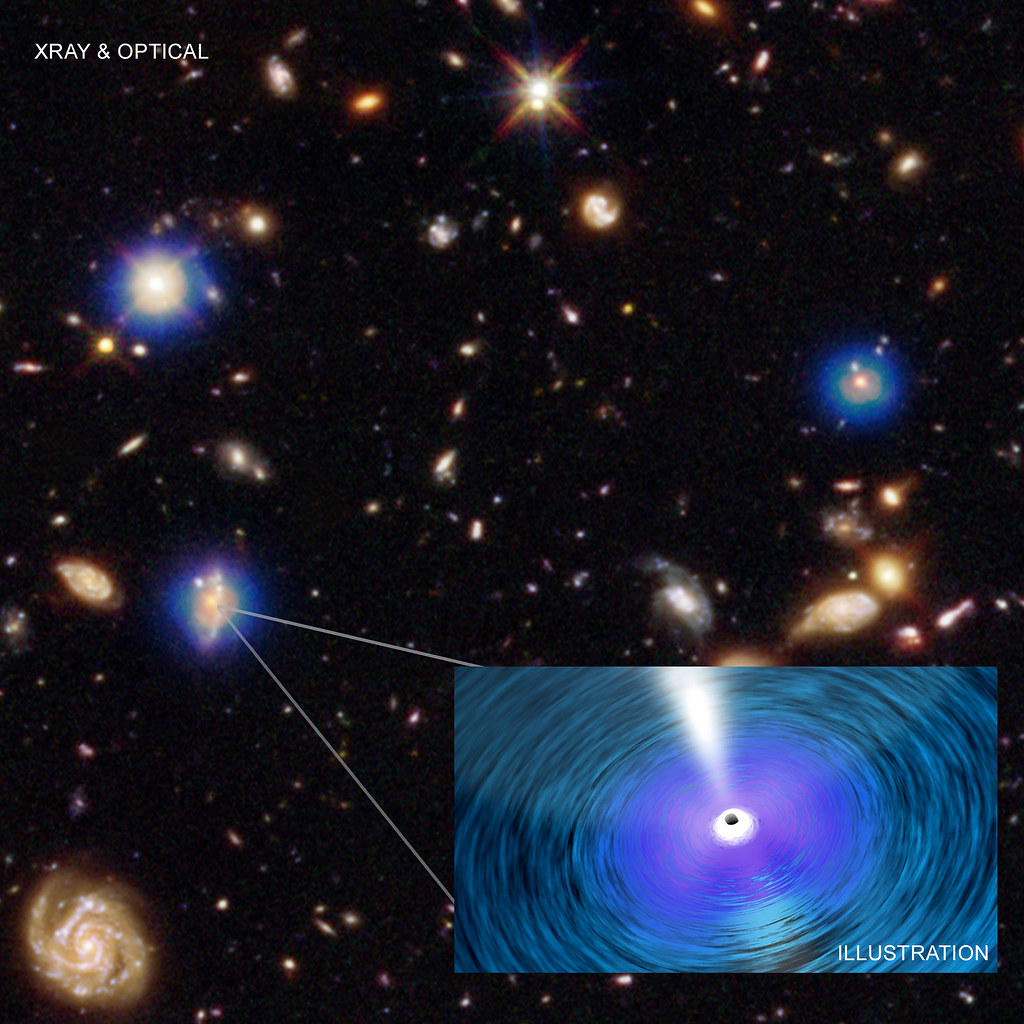The universe is a place of ceaseless wonder, a colossal laboratory where the most extreme physics unfolds on scales that challenge our comprehension. From the unfathomable power of supermassive black holes to the tantalizing prospect of limitless energy beamed from orbit, our journey of cosmic discovery is accelerating at an astonishing pace. Recent breakthroughs are not merely adding to our catalogue of celestial objects; they are fundamentally reshaping our understanding of cosmic evolution, the very fabric of spacetime, and even our potential for a sustainable future here on Earth.
Astronomers, with their ever-sharpening observational tools, are pushing the boundaries of what is detectable, reaching back to the universe’s infancy and unveiling phenomena that were once relegated to theoretical models. These recent findings, spanning billions of light-years and demonstrating futuristic technologies, paint a vibrant picture of an active cosmos. They invite us to marvel at the raw energy that drives galactic processes and to consider how humanity might eventually tap into the sun’s boundless power from an orbital vantage point.
This in-depth exploration will unpack some of the most fascinating recent revelations in astrophysics and space technology. We will traverse the cosmic landscape from the oldest and most distant blazar ever observed, to a dramatic stellar demise caught in the act, and then back to Earth, where an audacious experiment has just demonstrated the feasibility of beaming solar power from space. Each discovery offers a unique window into the universe’s most captivating secrets and the ingenious ways scientists are working to unravel them.

1. **The Record-Breaking Blazar J0410−0139: A Glimpse into the Early Universe**Astronomers have recently made a truly astonishing discovery: a supermassive black hole, dubbed J0410−0139, that is firing a giant energy beam directly at Earth. This cosmic juggernaut, boasting a mass equivalent to approximately 700 million suns, is observed from a galaxy that existed in the early universe, a mere 800 million years after the Big Bang. Its immense distance and age establish it as the most distant ‘blazar’ ever found, breaking previous records and offering an unprecedented look into the cosmos’s formative years.
This blazar’s record-breaking journey means that the radio waves we are now detecting have traveled over 12.9 billion light-years to reach us. The sheer age of this shining behemoth provides researchers with a unique opportunity to investigate the foundational processes behind the formation of the very first supermassive black holes. It also offers crucial insights into how these colossal galactic nuclei have developed and evolved throughout cosmic history, a process that is still not fully understood.
As study co-author Emmanuel Momjian, an astronomer at the National Radio Astronomy Observatory in Virginia, emphasized, “The alignment of J0410−0139’s jet with our line of sight allows astronomers to peer directly into the heart of this cosmic powerhouse.” This direct view is invaluable, transforming J0410−0139 into a unique laboratory. It enables scientists to study the intricate interplay between jets, black holes, and their surrounding environments during one of the most transformative epochs of the universe, providing data that would otherwise be impossible to obtain.

2. **Unveiling Blazars: Cosmic Powerhouses and Their Energetic Jets**To fully appreciate the significance of J0410−0139, it’s essential to understand what blazars are and how they operate. Blazars are a specific type of quasar, which are themselves exceptionally luminous active galactic nuclei powered by supermassive black holes. These black holes are so massive that they can superheat the material swirling within their accretion disks to hundreds of thousands of degrees, causing them to emit enormous quantities of electromagnetic radiation across the spectrum.
The immense magnetic fields generated by these quasars play a crucial role in shaping this intense energy. They sculpt the radiation into incredibly powerful, twin jets that shoot out perpendicularly from the accretion disks. These jets can extend well beyond the confines of their host galaxies, influencing vast regions of space. It’s an awe-inspiring display of cosmic engineering, where gravity, magnetism, and matter conspire to create some of the most energetic phenomena in the universe.
What differentiates a blazar from other quasars is a matter of cosmic serendipity: by chance, one of these twin jets points directly towards Earth. This unique alignment creates incredibly radio-bright spots that pulse as the central black hole continuously consumes matter. These direct views allow astronomers to observe the jets with exceptional clarity and intensity, making blazars appear as some of the brightest objects in the night sky, despite their immense distances. They are truly cosmic lighthouses, beaming their incredible power across billions of light-years.
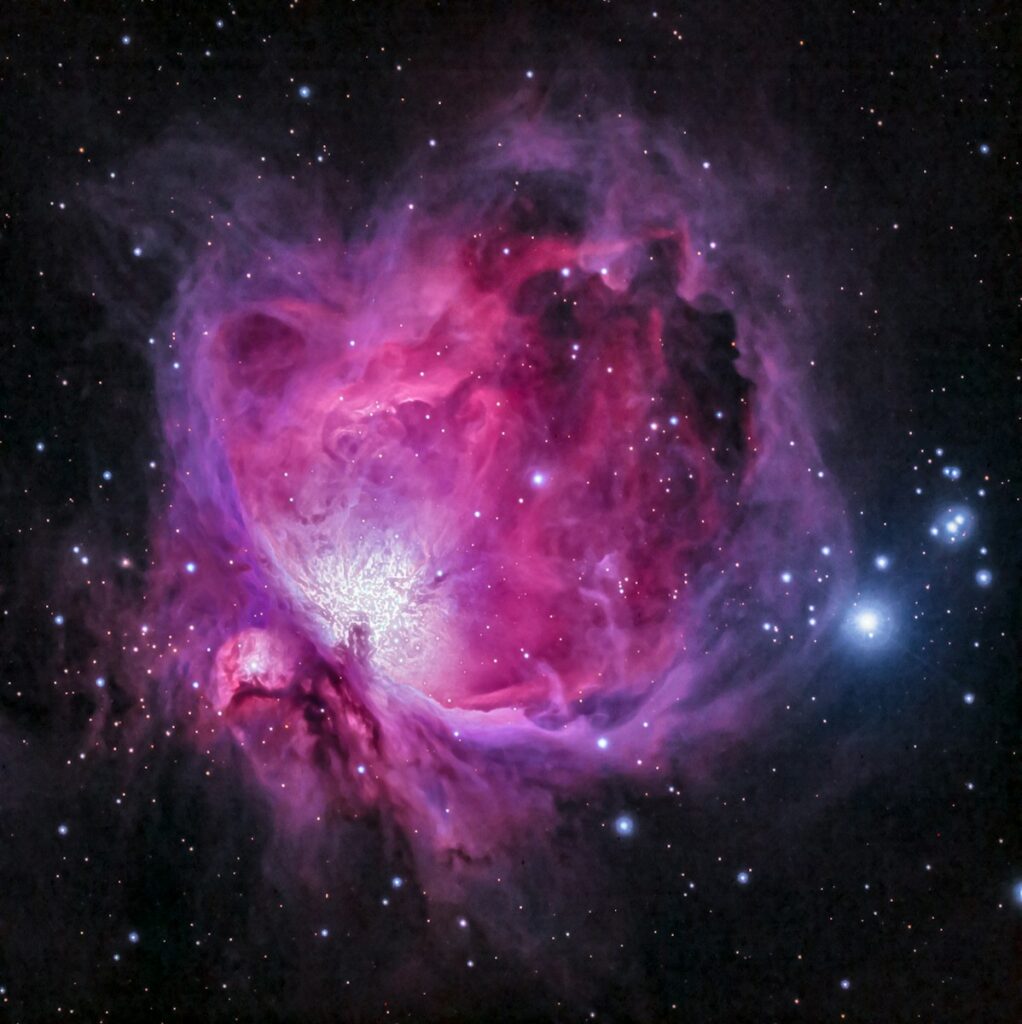
3. **The Observational Arsenal: Telescopes That Revealed J0410−0139**The detection of an object as distant and ancient as J0410−0139 is a testament to the remarkable capabilities of modern astronomical instruments and the collaborative spirit of international science. The researchers utilized a powerful combination of telescopes to gather the data necessary for this groundbreaking discovery. These observatories, each contributing a unique perspective across the electromagnetic spectrum, allowed for a comprehensive analysis of the blazar’s properties.
Key among these tools were the Atacama Large Millimeter Array (ALMA), a state-of-the-art radio telescope situated in the high Chilean desert, known for its unparalleled sensitivity to millimeter and submillimeter wavelengths. The Magellan telescopes, also located in Chile, provided optical data, while the European Southern Observatory’s Very Large Telescope (VLT), another Chilean powerhouse, offered crucial spectroscopic and imaging capabilities. This ground-based triumvirate provided a formidable foundation for the observations.
Complementing these terrestrial giants was NASA’s Chandra X-ray Observatory, an orbiting telescope designed to detect X-ray emissions from high-energy cosmic sources. By combining data from these diverse instruments – including radio, optical, and X-ray observations – researchers were able to paint a complete picture of J0410−0139, confirming its nature as a blazar and accurately determining its record-breaking distance and characteristics. This multi-wavelength approach is often critical for unraveling the mysteries of the most extreme cosmic objects.
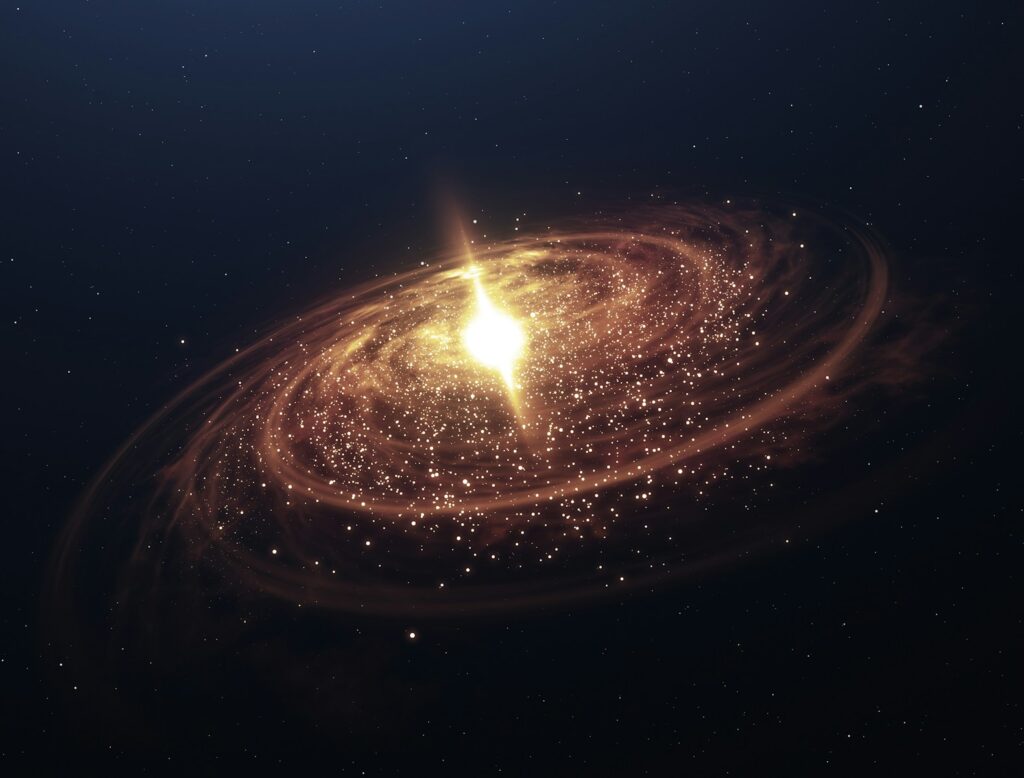
4. **Peering into the Early Universe: J0410−0139 as a Cosmic Laboratory**The immense age of J0410−0139 positions it as an invaluable cosmic laboratory for understanding the universe during its infancy. At just 800 million years after the Big Bang, the cosmos was undergoing profound transformations, including the very first formation of galaxies, the birth of the earliest stars, and the emergence of the inaugural black holes. Studying objects from this era allows scientists to piece together the critical processes that shaped the universe we see today.
This blazar provides astronomers with unparalleled data about the early universe, offering direct insights into the formation mechanisms of black holes and the behavior of matter in their extreme gravitational fields. It also sheds light on how these powerful objects might have influenced the early evolution of galaxies, potentially seeding structures or disrupting star formation in ways we are only beginning to comprehend. The light from J0410−0139 is a true time capsule, preserving information from a pivotal epoch.
As Emmanuel Momjian pointed out, the opportunity to “study the interplay between jets, black holes, and their environments during one of the universe’s most transformative epochs” is a golden one. The detailed observations of J0410−0139 will help refine models of cosmic evolution, black hole growth, and the conditions of the early intergalactic medium. It’s an exciting step towards answering some of the most fundamental questions about where the universe came from and how it grew up.

5. **A Star’s Violent End: The Beam from Sw 1644+57**While J0410−0139 offers a distant glimpse into the past, another recent discovery brought a dramatic, active event into sharp focus: a supermassive black hole ripping apart and devouring a star, blasting a powerful beam of energy directly at Earth. This incredibly rare sight, which astronomers estimate likely happens only once every 100 million years in any given galaxy, was initially mistaken for a different cosmic explosion, highlighting its unusual nature.
NASA’s Swift Gamma-Ray Burst Mission spacecraft first detected an intensely bright flash, designated Sw 1644+57, within the constellation Draco, nearly 4 billion light-years away. Astronomers initially believed it to be a powerful gamma-ray burst from a collapsing star. However, when the tremendous energy persisted for months, far longer than a typical gamma-ray burst which usually fades within a day, scientists realized they were witnessing something far more mysterious and unique.
Joshua Bloom, assistant professor of Astronomy at the University of California, Berkeley, and a study co-author, explained the rarity: “This burst produced a tremendous amount of energy over a fairly long period of time.” Using Swift, Hubble Space Telescope, and Chandra X-ray Observatory observations, Bloom and his colleagues concluded that a black hole, a million times more massive than our sun, was violently shredding a star about the size of our sun. The swirling mass around the black hole, much like water down a drain, released an extraordinary amount of energy, and fortuitously, one of its two created jets was aimed squarely at Earth, providing astronomers with an unparalleled, lucky view of this cosmic cataclysm.
6. **Revolutionizing Energy: The Space Solar Power Demonstrator (SSPD-1)**Beyond peering into the distant past and witnessing dramatic cosmic events, scientists are also making strides in harnessing the universe’s energy for our future on Earth. A groundbreaking experiment recently demonstrated the viability of tapping into the near-limitless supply of solar power from space. The Space Solar Power Demonstrator (SSPD-1) has successfully proven its ability to wirelessly beam power through space and direct a detectable amount of energy towards Earth, marking a significant milestone.
The premise is elegant and powerful: solar energy in space is constantly available. It is not subject to the day-night cycle, cloud cover, or terrestrial weather patterns that limit ground-based solar panels. In fact, estimations suggest that space-based harvesters could yield up to eight times more power than their Earth-bound counterparts. This offers a compelling vision for a future where energy scarcity could be a relic of the past, with clean, abundant power accessible globally.
SSPD-1 was launched in January 2023 as a critical component of the California Institute of Technology’s (Caltech) Space Solar Power Project (SSPP). The primary, ambitious goal of SSPP is to collect solar power in orbit, convert it into a transmittable form, and then beam it down to the surface of Earth where it can be utilized. This pioneering mission represents a bold step towards transforming a futuristic concept into a practical, implementable technology, potentially redefining our energy landscape.

7. **MAPLE’s Groundbreaking Achievement: Wireless Energy Beaming from Orbit**At the heart of SSPD-1’s success lies the Microwave Array for Power-transfer Low-orbit Experiment, or MAPLE. This innovative instrument, composed of flexible and lightweight microwave power transmitters, has achieved unprecedented feats in space. MAPLE successfully demonstrated the transmission of energy wirelessly through space by sending power from its transmitter to two separate receiver arrays located roughly a foot away, where it was converted into electricity to light up a pair of LEDs.
But the true breakthrough came when MAPLE was programmed to direct its energy towards Earth. Dr. Ali Hajimiri, Co-Director of the Space-Based Solar Power Project, confirmed the success: “We received confirmation that MAPLE can transmit power successfully to receivers in space. We have also been able to program the array to direct its energy toward Earth, which we detected here at Caltech.” This crucial step validated the system’s ability to operate in the harsh vacuum of space and reliably transmit power over vast distances.
Furthermore, MAPLE’s design allowed for the experiment to demonstrate its capability to function in space’s extreme environment, enduring significant temperature swings and exposure to solar radiation, despite not being hermetically sealed. This resilience is vital for future large-scale SSPP units. As Dr. Hajimiri proudly stated, “To the best of our knowledge, no one has ever demonstrated wireless energy transfer in space, even with expensive rigid structures. We are doing it with flexible, lightweight structures and with our own integrated circuits. This is a first!” This marks a monumental leap in space technology, bringing us closer to a future powered from above.

8. **Broader Implications: Blazar Populations in the Early Universe**The discovery of J0410−0139, the most distant blazar ever detected, offers profound insights into the prevalence and growth of supermassive black holes in the universe’s formative epochs. Its existence at just 800 million years after the Big Bang implies that conditions for rapid black hole formation were well established early on, refining existing cosmological models.
Eduardo Bañados, lead author of the study, used a compelling “lottery” analogy: finding one blazar with a fortunate alignment implies many others, whose jets are not pointed at us, must have existed concurrently. This suggests a more active early universe than previously thought, where the 100-million-year age difference between J0410−0139 and the previous record-holder is significant, allowing black holes to grow by several orders of magnitude.
Indeed, study co-author Silvia Belladitta confidently declared, “Where there is one, there’s one hundred more [waiting to be found].” This outlook fuels the ongoing hunt for more blazars from this pivotal era, promising to further illuminate the cosmic landscape of the early universe and the foundational role played by supermassive black holes.
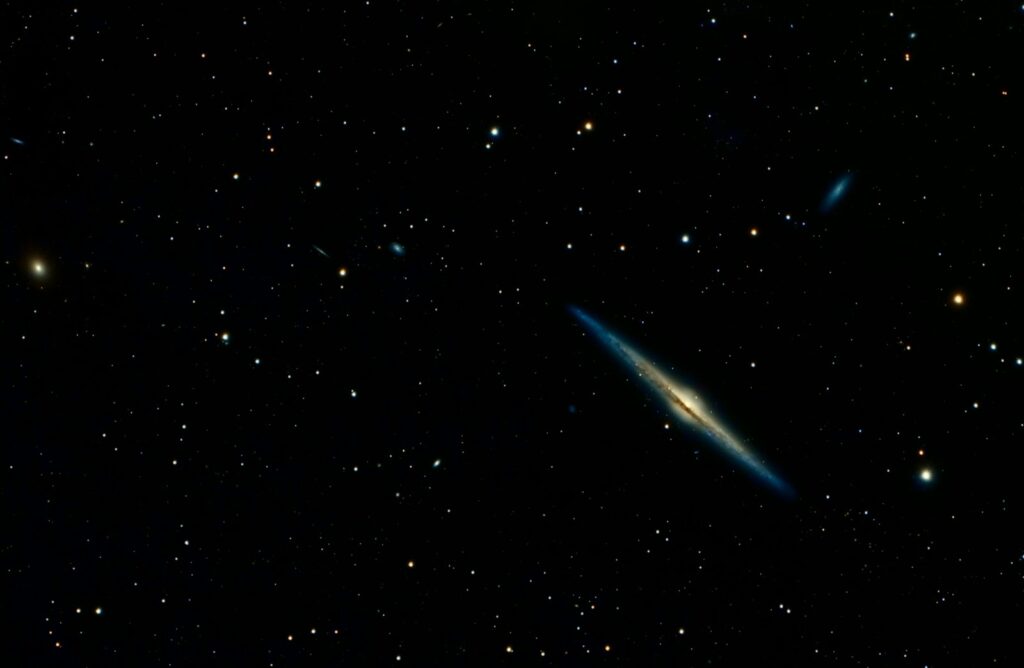
9. **The Solved Mystery: Powering Blazar Jets with Shock Fronts**For decades, the astonishing luminosity of blazar jets—capable of shining with the brightness of 100 billion Suns—presented a profound mystery. While the existence of these absurdly energetic beams was well-established since the 1960s, the precise mechanisms responsible for their overwhelmingly bright X-ray emissions remained an unanswered question, eluding explanation despite extensive study of radio and optical data.
The breakthrough came from the Imaging X-ray Polarimetry Explorer (IXPE), a collaborative mission between NASA and the Italian Space Agency, launched in December 2021. This innovative space observatory, uniquely capable of capturing X-ray light polarization, allowed scientists, led by Ioannis Liodakis, to examine Markarian 501, an extremely bright blazar. Liodakis emphasized IXPE’s importance, stating that X-rays “come right from the heart of the accelerator,” making it the “ideal tool to address our questions.”
IXPE’s March 2022 observations of Markarian 501 provided crucial evidence. The data strongly suggested that particles within the jet are accelerated to incredibly high energy levels by violently slamming into slower-moving material within the galaxy. This collision generates powerful shock waves that propagate through the jet, boosting particles and causing them to emit highly polarized X-ray light, which then becomes less polarized beyond the shock front.
These pivotal results confirm theoretical models predicting the central role of shock waves in powering these natural cosmic particle accelerators. The findings open a “new window to the Universe,” enabling direct testing of models and deeper understanding of light and matter behavior under extreme conditions. The team plans further observations, especially during blazar outbursts, to uncover even more secrets about the dynamics of these brilliant objects.
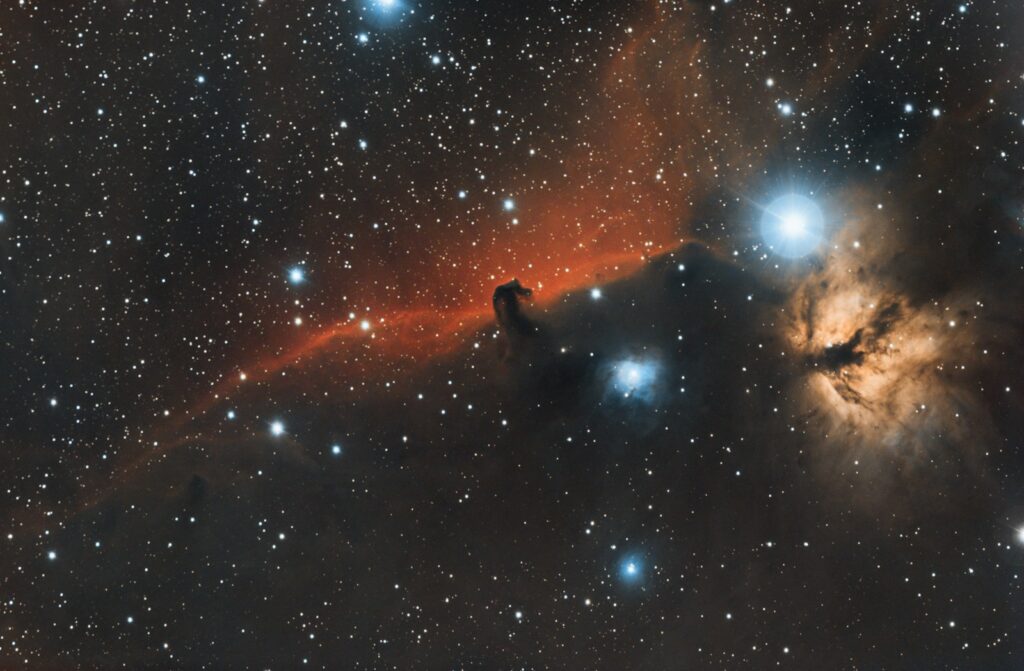
10. **Unraveling Cosmic Rays: Detecting Ultra-High-Energy Particles**The universe is a dynamic theater where extreme objects—from supernova remnants to active galactic nuclei—constantly emit charged particles and gamma rays with energies far exceeding those produced by nuclear fusion within stars. These high-energy cosmic rays, primarily composed of protons or atomic nuclei, traverse vast cosmic distances, offering a unique window into the most energetic processes in the cosmos.
Adding a compelling layer to this cosmic mystery, scientists have now detected cosmic electrons and positrons—the antimatter counterparts of electrons—with energies surpassing 10 tera-electronvolts (TeV)—a staggering 1,000 billion times greater than that of visible light. This groundbreaking observation stems from the H.E.S.S. collaboration, operating five telescopes in Namibia that have diligently peered into space for the past decade, focusing on cosmic radiation and high-energy gamma rays. Werner Hofmann from the Max Planck Institute for Nuclear Physics underscored the data’s significance in a “crucial and previously unexplored energy range,” likely to “remain a benchmark for the coming years.”
Cosmic rays, originating from violent cosmic events such as exploding stars, distant galaxies, and even our own sun during powerful solar flares, occasionally impact Earth’s atmosphere. When these incredibly swift particles collide with atmospheric atoms, they trigger cascades of secondary particles, some of which ultimately reach the planet’s surface. By studying these elusive messengers from space, scientists gain vital insights into the universe’s most energetic phenomena and the fundamental physics governing them.
11. **The Clues Within the Data: Tracing Cosmic Ray Origins**Tracing the exact origins of charged cosmic rays presents a formidable challenge for astrophysicists. Unlike light, which travels in straight lines, charged particles are profoundly influenced by the ubiquitous magnetic fields they encounter throughout their journey across interstellar and intergalactic space, deflecting their paths and scrambling any directional information.
Furthermore, as these high-energy particles traverse the cosmos, they inevitably interact with ambient light and magnetic fields, leading to a gradual loss of energy. This energy dissipation is particularly pronounced for electrons and positrons in the tera-electronvolt (TeV) range. Consequently, if scientists detect such ultra-high-energy particles here on Earth, it serves as a critical indicator: these particles likely originated from sources that are not exceedingly far away, as they would have lost too much energy over vast distances.
The meticulous data collected over a decade by the H.E.S.S. telescopes yielded a compelling clue: a noticeable “kink” in the energy spectrum around 1 TeV. Below and above this specific energy threshold, the spectrum exhibits distinct behaviors, suggesting a significant physical process or a change in source population. This sharp discontinuity is a powerful diagnostic tool, prompting scientists to investigate localized, powerful accelerators within our galactic neighborhood.

12. **Pulsars: The Prime Suspects for Cosmic Particle Acceleration**In the quest to identify the cosmic factories responsible for accelerating ultra-high-energy electrons and positrons, pulsars have emerged as prime candidates. These extraordinary celestial objects are the incredibly dense, rapidly rotating remnants of massive stars that met their end in spectacular supernova explosions. Though often no larger than a city, a pulsar can contain more mass than our entire Sun, packing immense gravitational and magnetic power into a compact sphere.
What makes pulsars such compelling suspects is their dual nature: extreme magnetic fields and incredibly rapid rotation. These conditions transform them into natural particle accelerators of unparalleled efficiency, capable of boosting particles to energies far exceeding anything achievable in terrestrial laboratories. As cosmic lighthouses, they emit powerful beams of electromagnetic radiation from their magnetic poles, periodically sweeping past Earth as rhythmic pulses.
Kathrin Egberts from the University of Potsdam further elaborated on why pulsars are the leading candidates. She stated, “The measured electrons most likely originate from very few sources in the vicinity of our own solar system, up to a maximum of a few thousand light years away.” She emphasized that if the sources were at greater distances, their contributions would blend together and “wash out this kink considerably,” reinforcing the requirement for nearby, powerful pulsars.

13. **H.E.S.S. Collaboration: A Decade of Discovery and Future Prospects**The High Energy Stereoscopic System (H.E.S.S.) in Namibia represents a monumental international effort to explore the high-energy universe. Comprising a phased array of five Cherenkov telescopes, H.E.S.S. is expertly designed to detect the faint, bluish flashes of light—known as Cherenkov radiation—produced when very high-energy gamma rays and cosmic ray particles interact with Earth’s atmosphere. By analyzing these subtle light signatures, the collaboration can infer the properties and origins of these incredibly energetic cosmic messengers. Over the past decade, H.E.S.S. has indeed proven to be a “game-changer” in the field of very high-energy astrophysics.
H.E.S.S. has yielded unprecedented insights into diverse cosmic phenomena, and a crowning achievement is the recent measurement of ultra-high-energy cosmic electrons and positrons and the precise characterization of their energy spectrum. Scientists now have compelling evidence that particles exceeding 10 TeV are very likely emanating from a relatively nearby pulsar, within a few thousand light-years of our solar system, as indicated by the sharp kink in the energy spectrum around 1 TeV.
This discovery marks a significant step forward in our understanding of how cosmic particles are accelerated to such extreme energies and how they propagate through our galaxy. Moving forward, the H.E.S.S. team, alongside the broader astrophysical community, plans to undertake future observations and develop even more detailed computer models. This ongoing research aims to precisely pinpoint the specific pulsar or pulsars responsible for sending these high-energy particles our way, and potentially to uncover other nearby sources contributing to the enigmatic cosmic ray population.

14. **The Search for Technosignatures: Pulses from HD 89389**Beyond the natural cosmic phenomena that continuously unfold, humanity’s enduring curiosity also extends to the tantalizing prospect of life—and intelligence—beyond Earth. This quest drives the Search for Extraterrestrial Intelligence (SETI), a scientific endeavor that actively seeks evidence of technology used by alien civilizations. A recent survey, encompassing 1,300 sunlike stars, has yielded an intriguing finding: a pair of very fast, identical pulses emanating from a star designated HD 89389, located approximately 100 light-years from Earth.
These unusual starlight pulses, characterized by their speed and identical nature, immediately raise questions about their origin. While the universe is full of natural astrophysical phenomena that can produce rapid flashes of light, the consistency and specific pattern of these particular pulses stand out. The search for such highly structured, artificial signals falls under the umbrella of optical SETI or LaserSETI, which specifically targets powerful lasers or other directed-energy technologies as potential indicators of advanced alien civilizations.
The possibility that these pulses could be “technosignatures” is, as described, a “far-out possibility,” yet one that warrants serious scientific investigation. Directed energy technologies, such as powerful lasers, could theoretically be used by an advanced civilization for communication across interstellar distances, or for propulsion, producing precisely targeted and distinct light patterns. Therefore, the detection of such unique pulses from HD 89389 makes it an excellent candidate for intensive future SETI searches, prompting astronomers to dedicate more observational resources to this particular star system.
However, in keeping with scientific rigor, researchers also acknowledge that the cause of these pulses might be entirely natural. A transient astrophysical event, such as a compact object briefly passing in front of the star from our line of sight, could potentially create a similar flickering or pulsing effect. Distinguishing between a natural astronomical phenomenon and a deliberate artificial signal is at the core of SETI research. Regardless of the ultimate explanation, the intriguing signals from HD 89389 highlight the exciting frontier of the search for extraterrestrial intelligence and the sophisticated methods being employed to listen for whispers from other worlds.
As we delve deeper into the cosmos, our understanding of its fundamental workings continues to expand in breathtaking ways. From witnessing the ancient fury of record-breaking blazars, to unraveling the precise physics powering their colossal jets, charting the enigmatic origins of ultra-high-energy cosmic rays, and taking audacious steps in beaming solar power from space, humanity’s scientific journey is one of relentless discovery. The universe, in its boundless complexity, constantly challenges our preconceptions and rewards our curiosity with ever more profound insights. Each new finding—whether a distant blazar, a stellar cataclysm, a revolutionary energy solution, or a potential whisper from another civilization—underscores the ceaseless wonder that awaits us, driving us to look further, question deeper, and imagine without limits.

